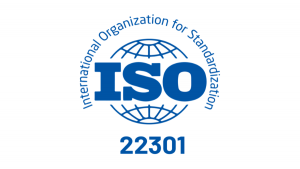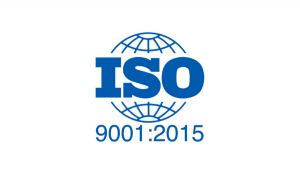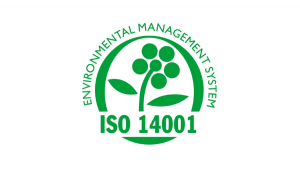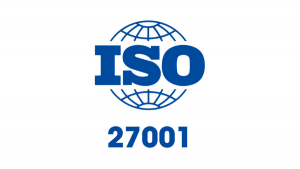What is the ISO:14001 standard?
The ISO:14001 (2015) standard focuses on controlling and improving an organization's environmental performance both within and throughout the supply chain. The purpose of ISO 14001:2015 is to achieve continuous improvement in the environment and sustainable business. It looks at the current environmental policy, the relevant environmental aspects that burden the organization and the measures the organization is taking to control or reduce this burden. In practice, a good understanding of the environmental risks and the proper control measures lead to cost savings within the organization. A good environmental management system, therefore, provides benefits. All the requirements in this international standard are general and intended to apply to any organization, regardless of its type or size or the products and services.
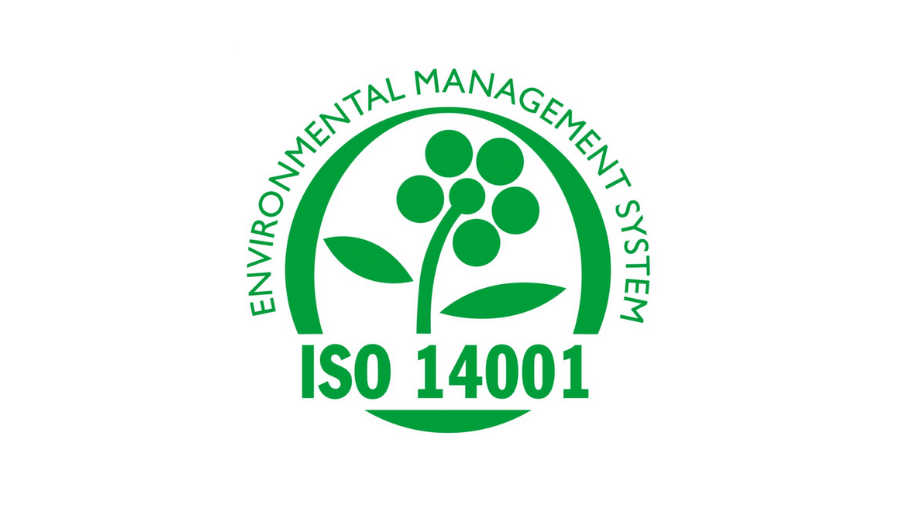
ISO:14001 Introduction
Using an environmental management system according to the ISO 14001 standard, the environmental risks of business operations can be controlled and, if possible, reduced. ISO 14001 certification is not generally required, but there are municipalities that ask for it when issuing an environmental permit. Larger companies, especially governments, often include ISO 14001 certification as a requirement in their applications.
Standard content ISO:14001
The ISO 14001 is made up of a number of chapters. Any ISO standard released from 2017 will have the same format:
Introduction
This section explains some of the principles of the standard
Topic and Scope
This international standard helps an organization achieve the intended results of its environmental management system, which are valuable to the environment, the organization itself and stakeholders. In accordance with the organization's environmental policy, the intended results of an environmental management system include:
- improving environmental performance;
- meeting compliance obligations;
- achieving environmental objectives.
Normative References
There are no normative references.
Termen en definities
Explanation of terms and definitions used
Context of the organization
It is important for the organization to gain insight into the environment in which it operates. By means of two analyses (collectively the context analysis), the environment is mapped out. We are talking about the stakeholder analysis and the risk analysis.
The stakeholder analysis: with regard to the environment, the organization must determine who its stakeholders are and what the requirements, wishes and expectations are.
The risk analysis: once you have established the requirements and wishes of your stakeholders regarding the environment, you also perform the risk analysis.
Leadership
Management must be involved in the environmental management system. You demonstrate this by, among other things:
- Establishing an environmental policy and objectives;
- Communicating the importance of environmental management in the organization;
- Directing and supporting people to contribute to the environmental system;
- Communicating the environmental policy and objectives to your employees.
Planning
This chapter of the ISO 14001 standard has a lot of impacts. This chapter is about planning actions to address a number of issues. These are:
- The risks and opportunities from chapter 4;
- Important environmental aspects;
- Compliance objectives.
- This includes objectives and actions to achieve those objectives.
- The whole thing will eventually culminate in an environmental aspects register.
Support
To operate an effective and efficient environmental management system, the requirements for ISO 14001 in this chapter are about support. In doing so, we look at the following:
- Establishing and providing resources needed for the environmental system;
- Establishing competencies that your people need;
- Ensure awareness among staff regarding the environment;
- Implement the processes needed for communication-related to the environmental system;
- Prepare documented information that the ISO 14001 standard requires or the organization deems necessary for the effectiveness of the environmental management system.
Implementation
Now that the actions are planned and resources are available, good intentions must be implemented. Chapter 8 of the ISO 14001 standard gives a number of requirements for this within the following topics:
- Operational planning and control: the organization must implement and control the processes needed to carry out the actions planned under chapter six This concerns, for example, communicating relevant environmental requirements to external suppliers.
- Emergency preparedness and response: when a potential emergency occurs, the organization must have implemented the necessary processes to respond to it. For example, by planning measures to prevent or mitigate adverse environmental impacts resulting from an emergency.
Performance Evaluation
After planning and implementing the actions related to the ISO 14001 environmental management system, the evaluation of performance under the ISO 14001 certification requirements follows. Three points stand out:
- Compliance: complying with relevant laws and regulations is important for any organization. The ISO 14001 standard reflects this with respect to the environment.
- Internal audit: There must be a periodic evaluation of whether the environmental management system is still adequate. This is done by performing an internal audit. For example, once a year.
- Management review: In addition to the subject of management, management must also regularly review the environmental management system. This too can be done once a year, at the same time as the internal audit.
Improvement
Chapter 10 is the final chapter of the ISO 14001 standard. It contains the requirements for actions needed to improve the results of the ISO 14001 system.
- Deviations and measures: deviations must be responded to and the consequences dealt with. If necessary, measures must be taken to prevent the deviation from occurring again.
- Continuous improvement: the suitability, adequacy and effectiveness of the environmental system must be continuously improved.
Auditprotocol NEN-EN-ISO:14001
Certification means that an external, independent party *certifying body establishes whether the organization's quality management system meets all standard requirements. To determine this, a certification body (CI) conducts an audit. This first (certification audit) consists of two phases.
The first phase serves;
to review the documentation
- evaluate the site and site-specific conditions and conduct interviews with employees to determine whether the organization is prepared for phase two
- to assess the extent to which the organization meets the requirements of the standard and understands the requirements of the standard, in particular with respect to the identification of key performance indicators and aspects, processes and operation of the management system
- gather necessary information regarding the scope of the management system, processes and locations, and relevant statutory and legal aspects
- to see what resources are available for the second phase and to reach an agreement with the organization on the elaboration of the second phase audit
- to obtain a good understanding of the organization's management system, its activities and significant aspects that are relevant to it
The purpose of the phase two audit is to assess the implementation and effectiveness of the management system. The phase two audit takes place at the organization's site(s). The phase two audit shall include at least the following:
- information and evidence relating to conformity to all requirements of the standard
- performance evaluation, measurement, reporting and assessments done to determine the extent to which goals and objectives have been achieved
- the organization's management system and how the organization meets legal requirements
- The control of the organization's processes
- Internal audits and management review
- involvement of management in the quality policy
- the connection and coherence between the standard requirements, the policy of the organisation, goals and objectives, legal requirements, responsibilities, the competence of employees, implementation, procedures, performance information and findings from internal audits.
Deviations
If any non-conformities are noted during an audit, they are recorded in the audit report. The name may vary from one certifying body to another but boils down to the following:
- Major non-conformity (Category 1 deviation):
- The absence of effective implementation with regard to one or more system requirements of the standard, or a situation in which it is not or not sufficiently ensured that the product or service will comply with requirements;
- Multiple Category 2 non-conformities with regard to a standard requirement for which it has been established that there is no effective implementation within the management system
- A category 2 non-conformity in which the required corrective actions have not led to effective implementation will be upgraded to a category 1 finding
The correction, root cause analysis and corrective action plan, together with sufficient evidence of their implementation, must be submitted within 90 days of the last day of audit. Assessment of nonconformities is done through desk research. However, depending on the seriousness of the findings, the auditor may conduct a follow-up visit to confirm that the measures have been taken, to evaluate their effectiveness and to determine whether nomination for certification or continuation of the certificate can take place.
- Minor non-conformity(Category 2 deviation):
A lack of discipline or control in the implementation of a system or procedural requirements, which does not affect the functioning of the system and/or the meeting of the product/service requirements.
The correction, root cause analysis and corrective action plan must be approved by the lead auditor and verification of the implementation and assessment of the effectiveness of the corrective action must take place at the next visit.
Observation
An observation is not in itself a deficiency, but it may indicate a possible future deficiency if the situation is given too little attention; an observation may also refer to a situation where no appropriate evidence is found to support the determination of a deficiency
Recommendations for improvement
Recommendations for improvement relate to areas and/or processes where - minimum - standard requirements may be met, but where improvement is possible.
Templates & Sample Documents (Available from us):
ISO_14001_Policy statement
ISO_14001_Procedure for Context Analysis
ISO_14001_Environmental aspects register
ISO_14001_Access to laws and regulations
ISO_14001_Internal audit procedure
ISO_14001_Training/competence overview
ISO_14001_Internal audit procedure
ISO_14001_Auditrapport
ISO_14001_Selection & Management Suppliers and Subcontractors
ISO_14001-Supplier evaluation
ISO_14001_Complaints and Improvement Procedure
ISO_14001_Complaints, Improvement Notice
ISO_9001_Procedure Management review
ISO_14001_Management review
ISO_14001_Year_planning
ISO Norms
ISO: 23301 Information
Door George |
CSR Performance Ladder
Door George |
ISO: 9001 Information
Door George |
ISO: 14001 Information
Door George |
ISO: 27001 Information
Door George |
Related articles to ISO: 14001 Information
Many customers and visitors to this page 'ISO: 14001 Information' also viewed the articles and manuals listed below:

